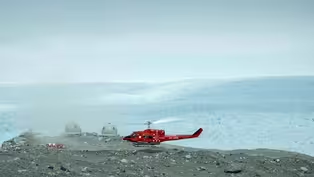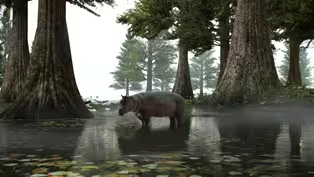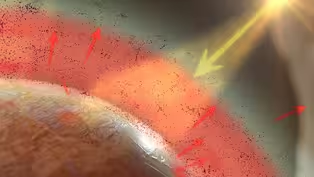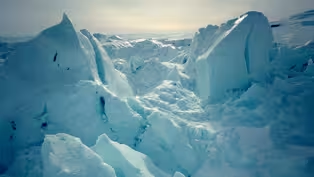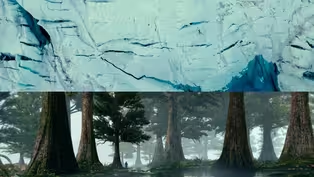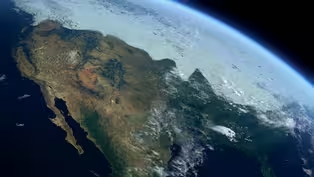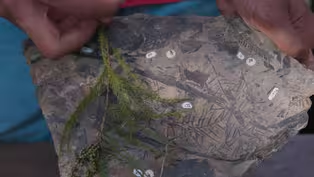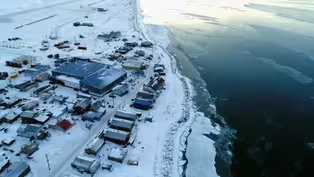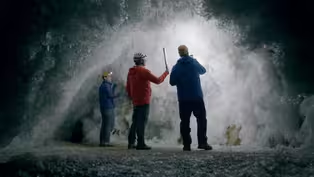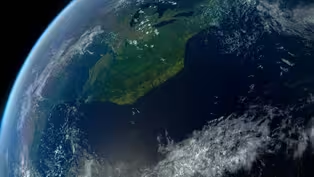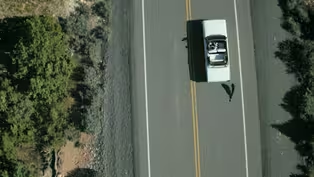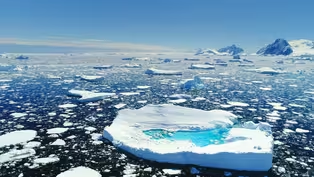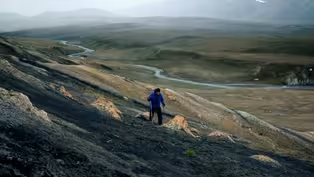
Polar Extremes Preview
Preview: Season 47 Episode 1 | 3m 19sVideo has Closed Captions
Paleontologist Kirk Johnson explores the dynamic history—and future—of ice at the poles.
Following a trail of fossils found in all the wrong places–beech trees in Antarctica, redwoods and hippo-like mammals in the Arctic–NOVA uncovers the bizarre history of the poles, from miles-thick ice sheets to warm polar forests teeming with life.
Problems playing video? | Closed Captioning Feedback
Problems playing video? | Closed Captioning Feedback
National Corporate funding for NOVA is provided by Carlisle Companies and Viking Cruises. Major funding for NOVA is provided by the NOVA Science Trust, the Corporation for Public Broadcasting, and PBS viewers.

Polar Extremes Preview
Preview: Season 47 Episode 1 | 3m 19sVideo has Closed Captions
Following a trail of fossils found in all the wrong places–beech trees in Antarctica, redwoods and hippo-like mammals in the Arctic–NOVA uncovers the bizarre history of the poles, from miles-thick ice sheets to warm polar forests teeming with life.
Problems playing video? | Closed Captioning Feedback
How to Watch NOVA
NOVA is available to stream on pbs.org and the free PBS App, available on iPhone, Apple TV, Android TV, Android smartphones, Amazon Fire TV, Amazon Fire Tablet, Roku, Samsung Smart TV, and Vizio.
Buy Now

NOVA Labs
NOVA Labs is a free digital platform that engages teens and lifelong learners in games and interactives that foster authentic scientific exploration. Participants take part in real-world investigations by visualizing, analyzing, and playing with the same data that scientists use.Providing Support for PBS.org
Learn Moreabout PBS online sponsorshipA Bird's-Eye View of Carbon Emissions
Video has Closed Captions
Clip: S47 Ep1 | 1m 56s | What if carbon dioxide pollution were solid carbon chunks? (1m 56s)
Fifty Million Years Ago, the Arctic Was a Warm Swamp
Video has Closed Captions
Clip: S47 Ep1 | 2m 7s | Drop yourself into a modern-day swamp, and that's what the ancient Arctic looked like. (2m 7s)
How Carbon Dioxide Warms Planet Earth
Video has Closed Captions
Clip: S47 Ep1 | 2m 32s | Carbon dioxide acts like a heat-trapping blanket, warming our planet. (2m 32s)
How Climate Has Shifted Over Millions of Years
Video has Closed Captions
Clip: S47 Ep1 | 2m 44s | Lake mud from the Russian Arctic tells us that Earth's climate has oscillated in the past. (2m 44s)
How Earth’s Climate Changed Over the Past 500 Million Years
Video has Closed Captions
Clip: S47 Ep1 | 3m 25s | Learn more about our planet’s Hothouse and Icehouse climates. (3m 25s)
How Humans Could Make Icehouse Earth into a Hothouse
Video has Closed Captions
Clip: S47 Ep1 | 4m 21s | Understand climate time. (4m 21s)
Plant Fossils Hint at Arctic's Swampy Past
Video has Closed Captions
Clip: S47 Ep1 | 3m 2s | Learn more about a lush forest that once dominated the Arctic. (3m 2s)
This Alaska Community is Losing Sea Ice to Climate Change
Video has Closed Captions
Clip: S47 Ep1 | 4m 47s | See how one small town’s survival is threatened by climate change. (4m 47s)
This Canadian Cave Has Been Frozen Since the Last Ice Age
Video has Closed Captions
Clip: S47 Ep1 | 3m 11s | Explore this spectacular, icy cave. (3m 11s)
What did the East Coast Look Like 3 Million Years Ago?
Video has Closed Captions
Clip: S47 Ep1 | 3m 21s | Scientists dig up ancient clams from the ocean 90 miles from the nearest beach. (3m 21s)
What if Carbon Left Your Tailpipe as Solid Chunks?
Video has Closed Captions
Clip: S47 Ep1 | 2m 12s | Together, all the cars on Earth would leave quite the pile of carbon behind—every day. (2m 12s)
What’s Causing Greenland’s Biggest Glacier to Melt?
Video has Closed Captions
Clip: S47 Ep1 | 2m 4s | Warming ocean water is eating away at Greenland's glaciers from below. (2m 4s)
Why Are There Stone Tree Trunks in the Arctic?
Video has Closed Captions
Clip: S47 Ep1 | 2m 50s | Fifty-million years ago these rocks were trees and this Arctic tundra was a steamy swap. (2m 50s)
Why Trees Are Living Climate Records
Video has Closed Captions
Clip: S47 Ep1 | 1m 29s | Trees have an environmental record etched into their very wood. (1m 29s)
Providing Support for PBS.org
Learn Moreabout PBS online sponsorship
- Science and Nature

Capturing the splendor of the natural world, from the African plains to the Antarctic ice.













Support for PBS provided by:
National Corporate funding for NOVA is provided by Carlisle Companies and Viking Cruises. Major funding for NOVA is provided by the NOVA Science Trust, the Corporation for Public Broadcasting, and PBS viewers.


